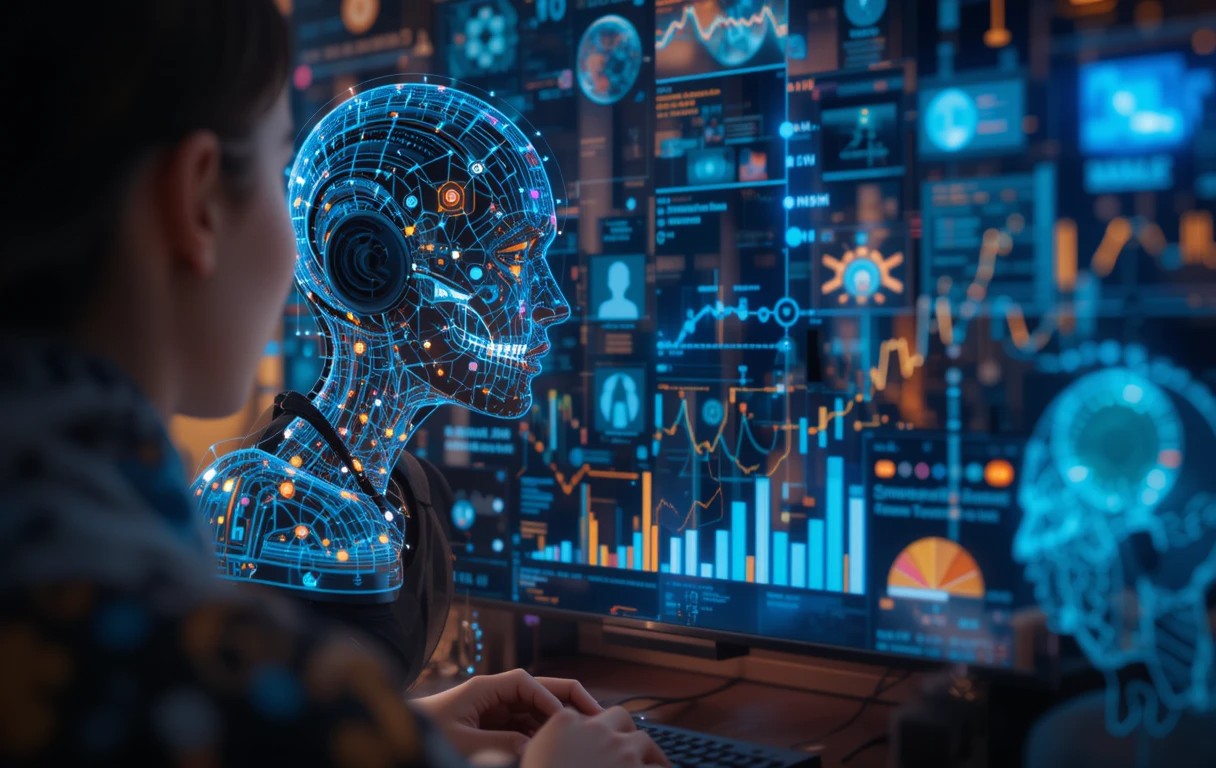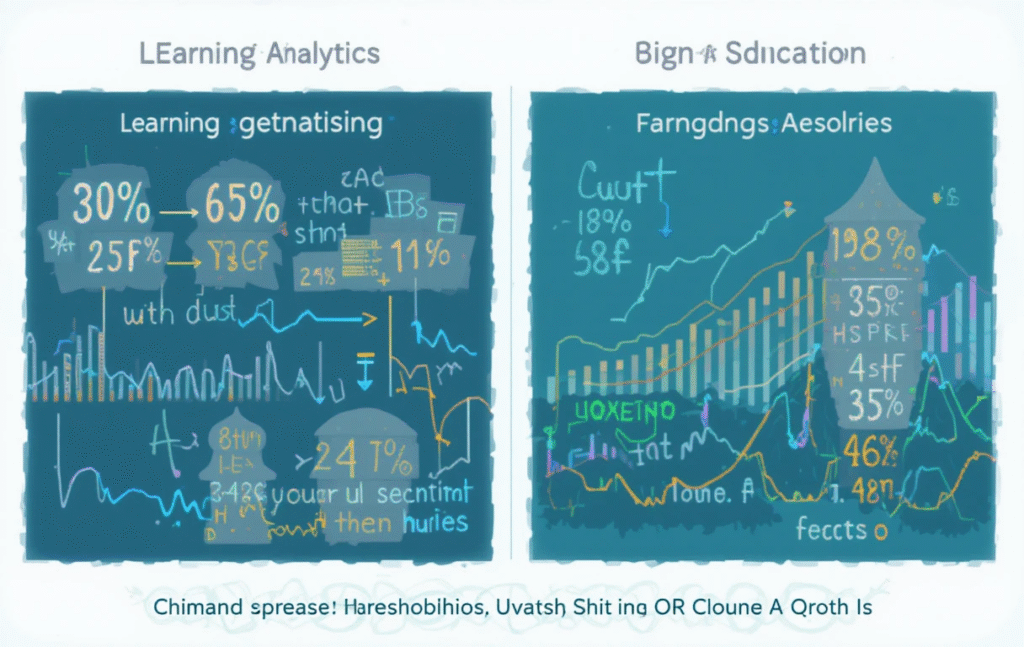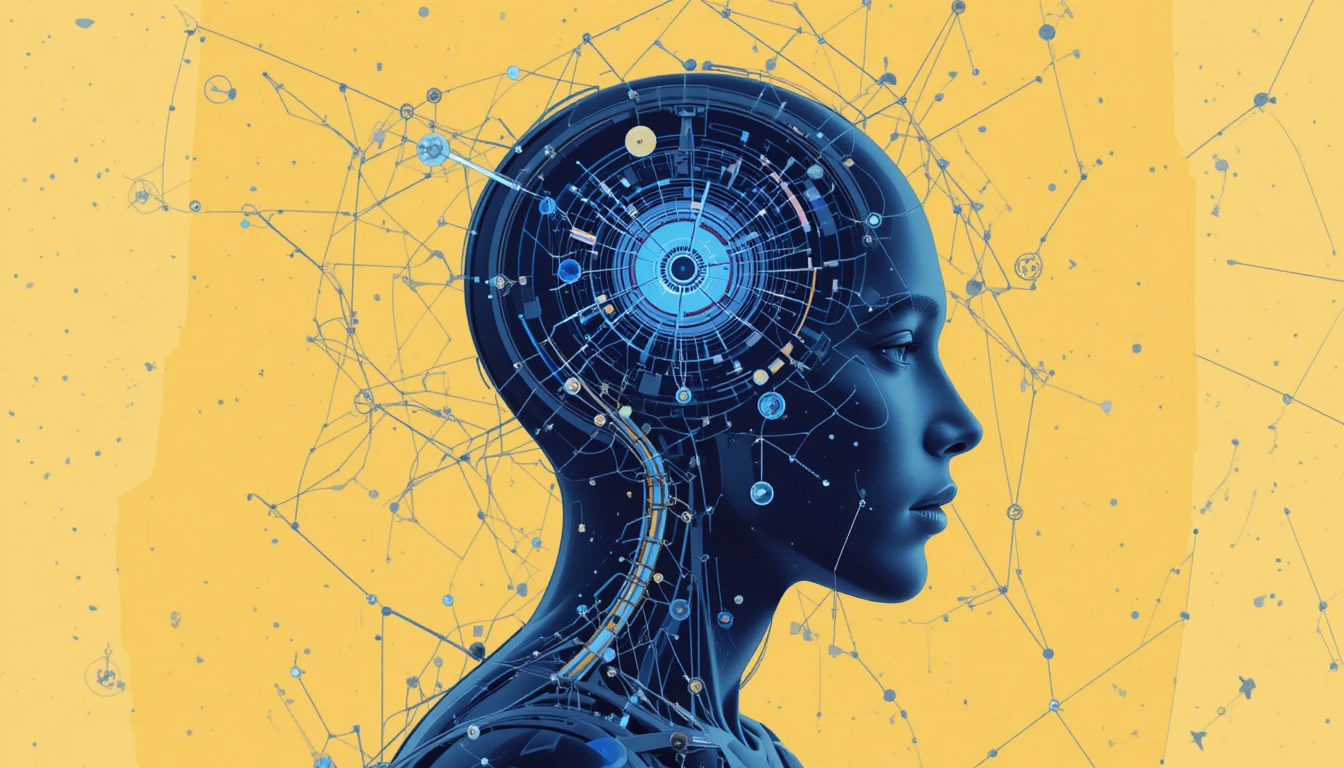In today’s digital classrooms, every click, pause, quiz attempt, and page scroll generates data. But what happens when we apply artificial intelligence (AI) to analyze this data in real time? The result is a groundbreaking transformation known as AI-powered learning analytics, a powerful tool driving personalized learning, predictive interventions, and smarter educational strategies.
In this comprehensive blog, we will explore how AI is turning raw student data into actionable insights—redefining student success, empowering teachers, and influencing educational policy.
📊 What Are Learning Analytics?
Learning analytics refers to the collection, measurement, and analysis of data about learners and their contexts to understand and optimize learning outcomes. Traditionally, this meant tracking grades or attendance. But with the rise of AI, learning analytics now involves:
- Behavior tracking (engagement, participation, attention span)
- Performance trends (quiz results, time spent on tasks)
- Emotional and motivational data (using sentiment analysis)
- Social learning interactions (discussion forums, peer collaboration)
When AI enters this space, it automates pattern recognition, prediction, and even real-time feedback at scale.
🤖 How AI Enhances Learning Analytics
AI brings several advanced capabilities to learning analytics:
1. 🔍 Pattern Recognition at Scale
AI algorithms detect learning patterns far beyond human capacity. For example:
- Students who re-watch certain video segments are more likely to need concept reinforcement.
- Students who skip introductory texts may perform worse on conceptual questions.
AI links thousands of such micro-behaviors to overall learning success or risk of failure.
2. 📈 Predictive Modeling
AI uses past and current student data to predict future outcomes such as:
- Dropout risk
- Exam failure
- Burnout or disengagement
This allows timely intervention by educators and support staff—before problems escalate.
3. 🎯 Personalized Learning Paths
AI analytics inform adaptive learning systems that adjust content in real-time:
- A student who excels in math but struggles with reading gets more scaffolded content in reading.
- Visual learners receive diagrams instead of lengthy explanations.
This individualized approach improves both engagement and comprehension.
4. ⏱️ Real-Time Feedback
AI-powered dashboards provide students with immediate insights:
- “You’re 3 days behind on your learning schedule.”
- “You’ve mastered 80% of the current module—ready to advance!”
Feedback isn’t just timely; it’s data-backed and specific, making it more actionable.
🧠 Core Components of AI-Powered Learning Analytics
1. Data Collection Tools
These gather learning behavior data from:
- Learning Management Systems (LMS) like Moodle, Blackboard, Canvas
- eLearning platforms like Coursera, Khan Academy, edX
- Classroom technologies (smartboards, attendance scanners)
- Collaboration tools (Google Docs, forums, Zoom)
2. AI Algorithms
Key AI models used include:
- Decision Trees: for classifying students into risk categories
- Neural Networks: for modeling complex behavior patterns
- Natural Language Processing (NLP): for analyzing written submissions and forum discussions
- Reinforcement Learning: for optimizing personalized content delivery
3. Dashboards and Visualizations
These present data insights to:
- Teachers: student progress, areas of concern, class-wide trends
- Students: personal learning metrics, goal tracking, suggested resources
- Administrators: program effectiveness, engagement rates, dropout forecasting
🏫 Benefits of AI-Powered Learning Analytics
🎓 For Students
- Personalization: Content adapts to strengths and weaknesses
- Motivation: Progress tracking boosts a sense of achievement
- Self-awareness: Students learn to reflect on their learning habits
👨🏫 For Educators
- Early Alerts: Intervene before a student falls too far behind
- Differentiated Instruction: Cater to varied learning styles
- Improved Grading: AI-assisted rubrics and auto-feedback for assignments
🏛️ For Institutions
- Curriculum Design: Identify which materials work and which need revision
- Retention Strategies: Reduce dropout rates with timely interventions
- Resource Allocation: Know which departments or programs need more support
🧪 Real-World Applications
1. Purdue University’s “Course Signals”
This system uses AI to monitor student behavior and generate a “stoplight” signal:
- Green = doing well
- Yellow = moderate risk
- Red = high risk
It led to a 21% increase in course completion rates.
2. Civitas Learning
Used in hundreds of universities, Civitas uses AI to predict student outcomes and recommend interventions. Institutions have reported double-digit improvements in retention.
3. Knewton (now part of Wiley)
An adaptive learning engine that tailors course content to individual learners in real time. Used widely in math, science, and business education.
4. IBM Watson Education
Analyzes student essays, engagement, and curriculum pacing to offer tailored teaching advice to instructors.
⚖️ Ethical Considerations
AI-powered learning analytics offers immense promise, but not without risks:
1. 🔐 Data Privacy
AI systems must handle sensitive educational records:
- Who owns the data?
- Is it anonymized?
- Can students opt out?
Institutions must comply with FERPA, GDPR, and other data protection laws.
2. 🤖 Algorithmic Bias
If AI is trained on biased data, it may mislabel or underserve minority, neurodiverse, or low-income students.
3. 🧍 Surveillance vs. Support
Too much data monitoring can feel invasive. It’s crucial to balance data collection with student autonomy and consent.
🌍 Learning Analytics in K-12 vs Higher Education
In K-12 Schools:
- Focus is on engagement, foundational skills, and behavior tracking
- Parental involvement is crucial
- AI systems may track reading fluency, math problem-solving time, or screen interaction
In Higher Ed:
- Emphasis on retention, course completion, and career readiness
- Used for enrollment forecasting and degree planning
- Students interact directly with AI dashboards and predictive feedback
🔮 The Future of AI in Learning Analytics
1. Emotion AI
Using facial recognition and tone analysis, AI will assess a student’s emotional state—bored, confused, or excited—and adapt content accordingly.
2. Cross-Platform Integration
Soon, data from all learning platforms—Google Classroom, Zoom, LMS, mobile apps—will converge into a unified student profile, giving a 360° view of learning.
3. AI-Powered Mentors
Virtual mentors will interpret analytics and coach students in real-time on study habits, motivation, and goal setting.
4. Policy and Equity Dashboards
Government and institutions will use analytics to spot achievement gaps, reallocate funding, and measure the impact of policy changes.
🧠 Best Practices for Implementation
- Start Small
- Begin with a single course or department before scaling analytics school-wide.
- Involve Stakeholders
- Engage students, teachers, parents, and tech experts in the design and deployment of analytics tools.
- Prioritize Transparency
- Clearly explain what data is collected, how it’s used, and how it benefits students.
- Train Educators
- Teachers must understand how to interpret dashboards and act on AI insights.
- Monitor and Adjust
- Continuously evaluate outcomes and refine models to ensure fairness and accuracy.
💬 Voices from the Field
“Thanks to AI analytics, I knew I was falling behind before my professor did. I was able to catch up and pass the course.”
— Student, Online University
“My dashboard showed that most students struggled with a particular assignment. I was able to revise the instructions and reduce confusion next time.”
— High School Teacher, Texas
“Learning analytics gives us data to not just react, but predict. That’s a game changer in student support.”
— University Dean, UK
🌟 Conclusion: Turning Data Into Opportunity
AI-powered learning analytics is not just about numbers—it’s about understanding people. When used ethically and strategically, it becomes a powerful lens through which educators can see and support every learner more clearly.
From anticipating struggles to amplifying strengths, from improving curricula to boosting graduation rates—data becomes direction, and AI is the compass.
Education isn’t just becoming smarter. It’s becoming more humane, because it finally sees the individual within the crowd.



